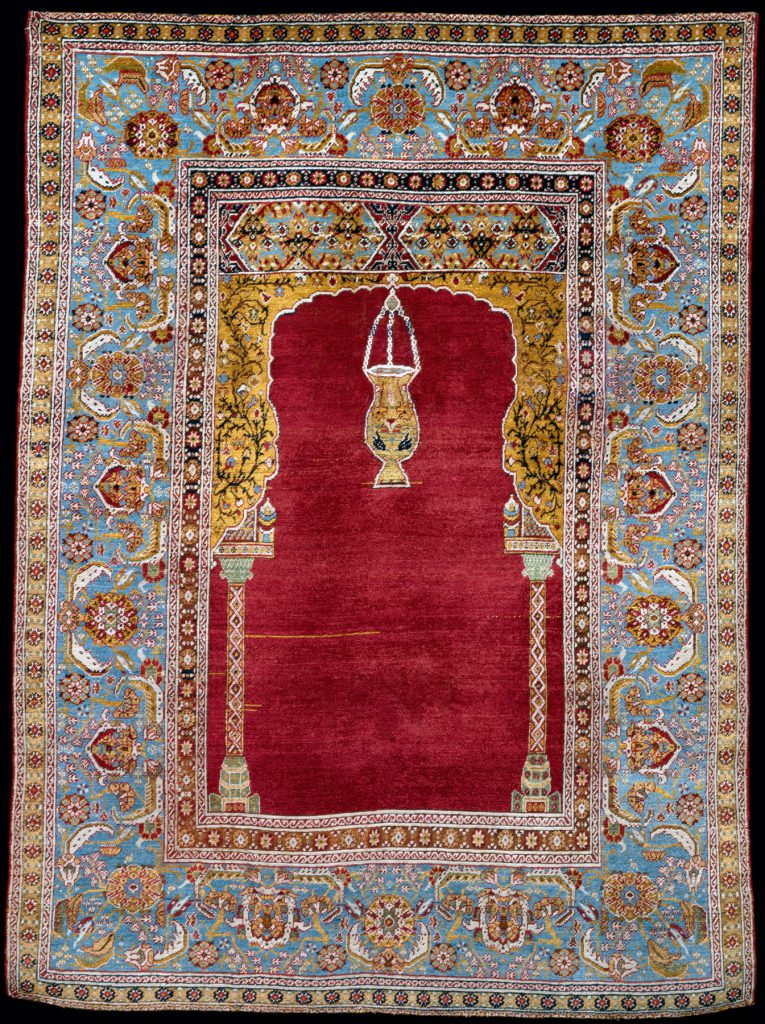



Title: Niche Rug
Date: late 16th or early 17th century
Location: Istanbul, Turkey, or Ottoman Cairo, Egypt
Materials: wool and cotton pile on a silk and wool foundation
Dimensions: 158 x 120cm
Accession Number: TXT 198
Other Notes:
The carpet has a central niche is in the form of a mihrab, with decorative side-columns and a hanging mosque lamp and was very probably hung on a wall, perhaps in the women’s quarters of a palace, to serve as a mihrab for communal prayers.
Cairo is documented in the building accounts of the mosque of Süleymaniye in Istanbul (inaugurated 1557) as a manufactory of fine carpets. With the increase in demand from the Ottoman court in the later 16th century, however, carpet weavers were brought from Egypt and settled in Istanbul.
Bibliography:
J.M. Rogers, The Arts of Islam. Masterpieces from the Khalili Collection, London 2010, cat.393, p.332.
Zoom
Close
